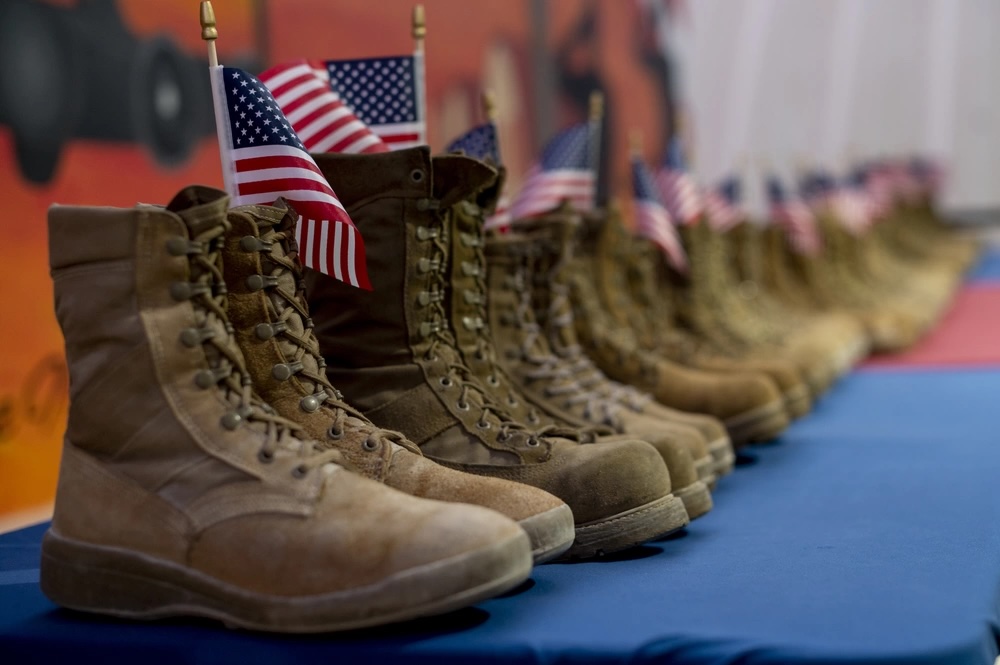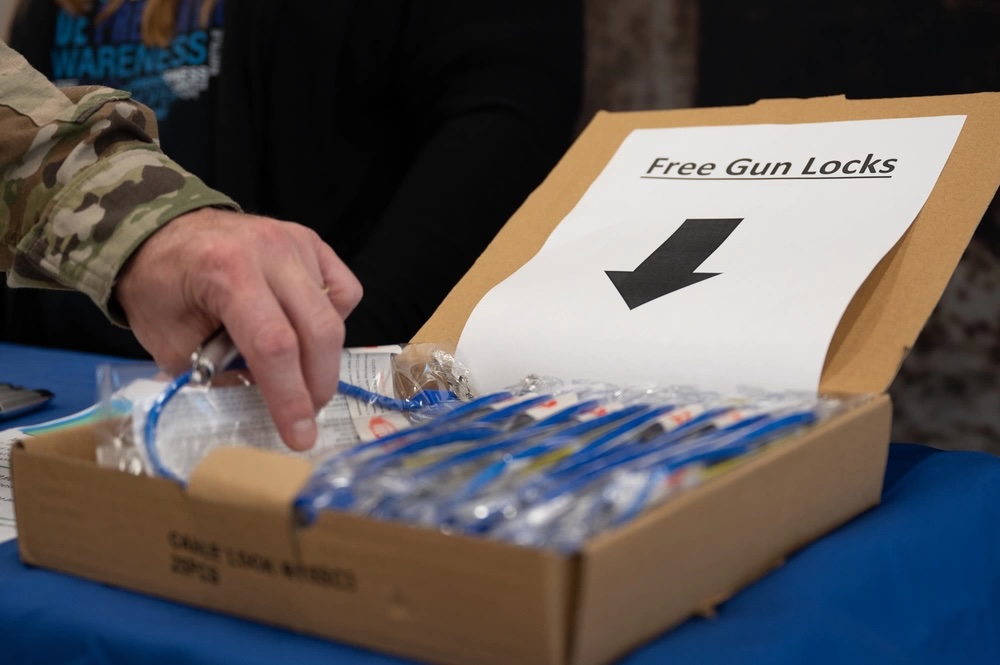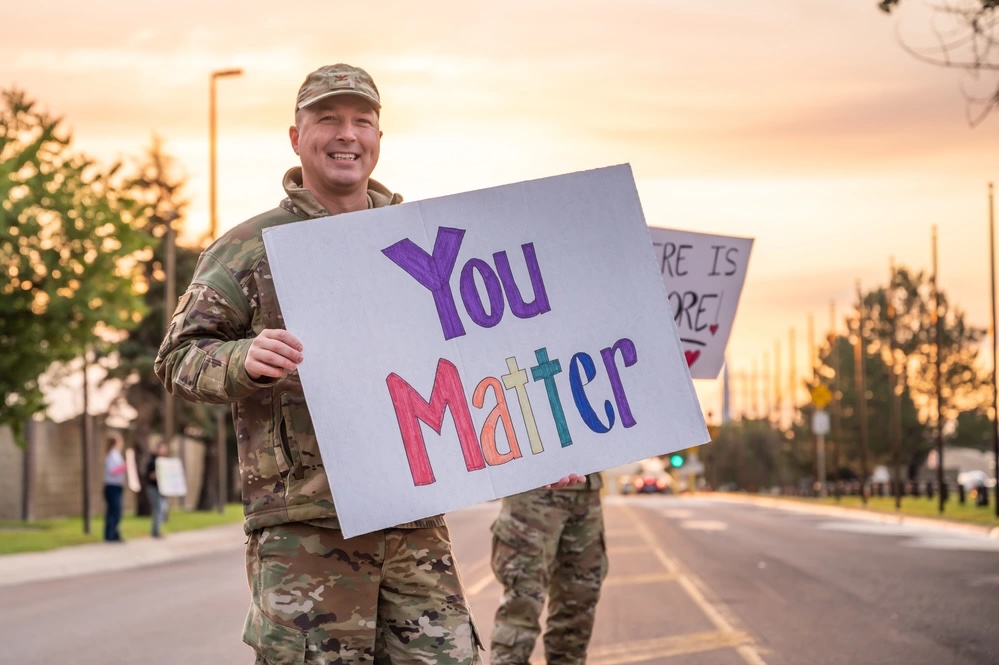The Air Force published a comprehensive analysis of suicide deaths during the calendar year 2020 earlier this month. The Total Force Department of the Air Force Standardized Suicide Fatality Analysis (StandS) combined data from medical, personnel, investigation, and event reports for each Active Duty, Guard, Reserve, and Department of the Air Force civilian who died by suicide in 2020—an in-depth study to help leaders prevent future deaths.
The goals of StandS are to standardize the suicide death review process to better understand their causes, and to generate lessons learned and actionable recommendations for military suicide prevention, intervention, and “postvention.”
Future studies will look at deaths from calendar years 2018, 2019, 2021, and beyond, though the release dates for those are not yet available. The StandS report is the result of a partnership between the Air Force and the Uniformed Services University of the Health Sciences.
Lt. Gen. Caroline Miller, deputy chief of staff for manpower, personnel, and services, first announced the report in March 2023, saying it was due that spring. It took longer than expected because it was the first report of its kind and officials wanted to get it right, Air & Space Forces Magazine reported in December.
There are two versions of StandS: a leadership report that summarizes the findings and provides recommendations, and a scientific report for researchers and health providers with more granular statistics. The findings listed on the leadership report include:
- In 2020, most of the 117 members of the Air Force and Space Force who died by suicide were Active duty, with 81 deaths (69.2 percent of the total), 17 were Air National Guardsmen (14.5 percent), 11 were Reservists (9.4 percent), and 8 were civilians (6.8 percent).
- Nearly all suicide decedents were male (93.2 percent).
- The vast majority of suicide decedents were enlisted (90.8 percent).
- The average age was 30.6 years old.
- The most common method of death was firearm use (68.4 percent). Most of the firearms were owned by the decedent (70 percent) or another person (6.3 percent), not the Air Force.
- Alcohol was known to have been used during over a third of suicide deaths (39.3 percent)
- Most of the decedents were struggling in their relationships with intimate partners (74.4%), family members (37.6 percent), or other military members (24.8 percent). Other common problems included workplace issues (53.8%), administrative/legal (43.6 percent) issues, and financial (29.9 percent) stress. Most of the decedents (80.3 percent) were affected by several of these issues at once.
- Most decedents (68.4 percent) disclosed suicidal thoughts at some point in their life, with over half (58.1 percent) communicating an intent to die by suicide at some point in their life.
- About 70.9 percent of the decedents had been in contact with a primary care provider for any reason in the year prior to their death, while 39.3 percent had been in contact with a mental health provider.
- About 16.2 percent of the decedents had a history of non-suicidal self-directed violence, while 26.5 percent had a history of prior suicide attempts.

Contributing Factors
Researchers followed a social-ecological model used by the U.S. Centers for Disease Control and Prevention (CDC) to sort the potential contributing factors into four levels: societal, military community, relational, and individual.
The societal level includes stigma about mental health, norms around firearm use, and stereotypes of masculinity and military identity.
“Adherence to stereotypically masculine traits of stoicism and self-reliance has been linked with thwarted belongingness, an indicator of the desire for suicide, among military personnel,” the report read. “Stoicism and self-reliance can limit self-disclosure, reduce access to social support, and prevent timely help-seeking.”
Isolation due to the COVID-19 pandemic also may have played a role in some cases.
“Loneliness, especially during COVID-19, has been referred to as a bigger health risk than obesity,” researchers said. “Some decedents experienced a lack of social connection so severe that there was no evidence of friendships or romantic relationships.”
The “community” level refers to the relationships people form in neighborhoods, schools, or workplaces. In the military community, some of the contributing factors flagged by the report include the stresses and frequent moves of service life, pay delays, concerns about the impact of mental health care on a member’s career, problems with accessing mental health care, and the normalization of problematic alcohol use and casual joking about suicide.
“Operations tempo and thus, increased responsibilities, were at times above and beyond what the Airmen were able to manage effectively,” the report pointed out under the “military occupational stressors” category. Researchers also found that leaders, colleagues, and family members often missed warning signs for suicide or lacked the tools to coordinate an effective intervention.
“In efforts to establish a ‘Wingman Culture,’ the Air Force has used multiple methods to train and equip Airmen to recognize suicide warning signs in order to take prompt action to save a life,” the report said. “However, individuals in decedents’ social network including friends, family members, intimate partners, military coworkers, and/or leaders (e.g., front-line supervisors, first sergeants, commanders) at times missed warning signs for suicide or noted warning signs but did not adequately respond.”

The relational level refers to conflicts or stressors in a members’ romantic or family relationships, their ability to handle conflict, break-ups, or the death of a friend or loved one. The individual level refers to a member’s own background experiences, mental and physical health, alcohol use, life and financial stresses, and access to firearms.
“No one factor exists in a vacuum—the Social-Ecological Model helps explore the interplay between individual, relational, community, and societal factors influencing suicide,” the report said. Instead of reducing the numbers to descriptive statistics, the report “is based on themes and trends observed by members of the USU team.”
Recommendations
The report offered 68 recommendations to address its findings, many of which involved firearm safety. Researchers called for leaders and service members at all levels to “promote a culture of safe firearm storage” by resourcing for safe storage efforts, creating how-to guides, and forming a task force to come up with a safe firearm plan at each installation.
For commanders, first sergeants, and front-line supervisors, the recommendations included reviewing StandS on an annual basis, holding regular meetings with mental health experts to create goals and evaluate progress, learning how to notice warning signs and act as supportive “gateway” to mental health care, and consulting mental health professionals for how to handle difficult decisions involving Airmen and Guardians with mental health conditions.
The report also made several recommendations specific to the disciplinary process, such as not delivering reprimands before a weekend. In the event of a suicide, researchers said leaders should have a clear communication plan to minimize the chance of rumors spreading false information.
If 2020 was any sign, the force needs to be better-educated on how to notice warning signs of stress, how to manage conflicts in relationships, regulate emotions, create supportive social connections, and how to intervene before a suicide occurs, researchers wrote. That education could take place in Professional Military Education, basic training, tech school, or other forums. Some of that shift involves not tolerating jokes about suicide, while other parts involve learning concrete skills such as where to find help for financial trouble and how to report complaints of discrimination or reprisal. Current suicide prevention training may also need to be updated, they said.
“Wingmen practice healthy behaviors and make responsible choices and encourage others to do the same,” the report said. “Wingmen foster a culture of early help-seeking. Wingmen recognize the risk factors and warning signs of distress in themselves and others and take protective action.”

Other recommendations include aligning mental health services with operational schedules and tempo, increasing support or availability for Airmen with odd hours or top-secret clearances or who are in administrative or legal trouble. It also calls for base- and MAJCOM-level Community Action Boards and Community Action Teams, which would “provide a forum for the cross-organizational review and resolution of individual, family, installation, and community issues that impact the force readiness and the quality of life.”
The recommendations are not binding.
“We must emphasize that the intent behind providing a comprehensive list of recommendations is not to overburden DAF leadership or the [Suicide Prevention Program] with additional tasks or ideas that may have limited implementation feasibility,” researchers wrote. “We trust that the DAF leadership serving as the target audience for this Leadership Report will achieve system-related enhancements in those domains recognized to be most salient, feasible, impactful, and the most likely to result in favorable outcomes not just for suicide risk mitigation but also for the overall health of the Total Force.”
